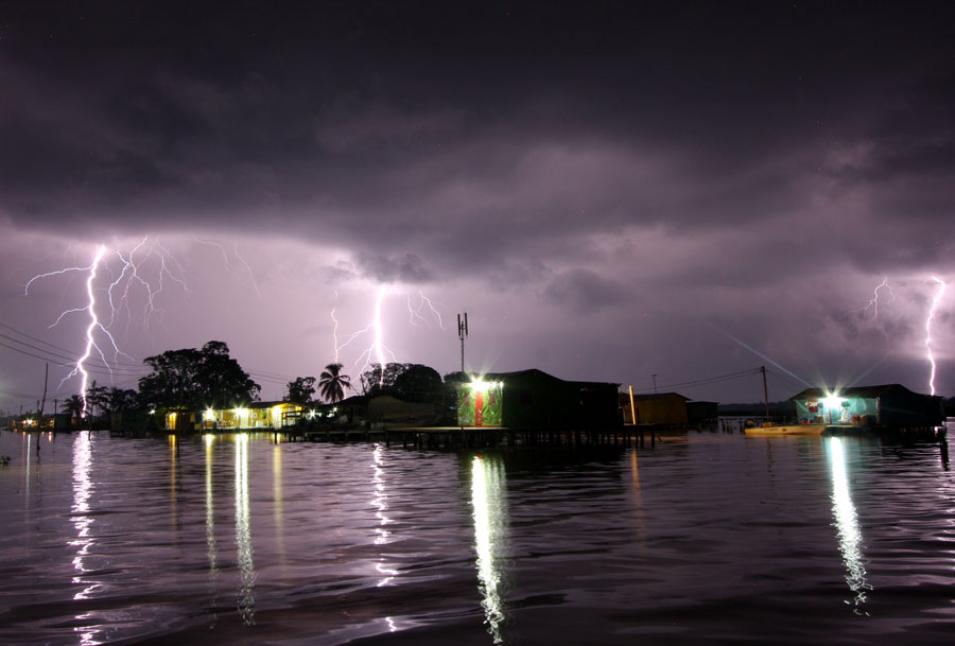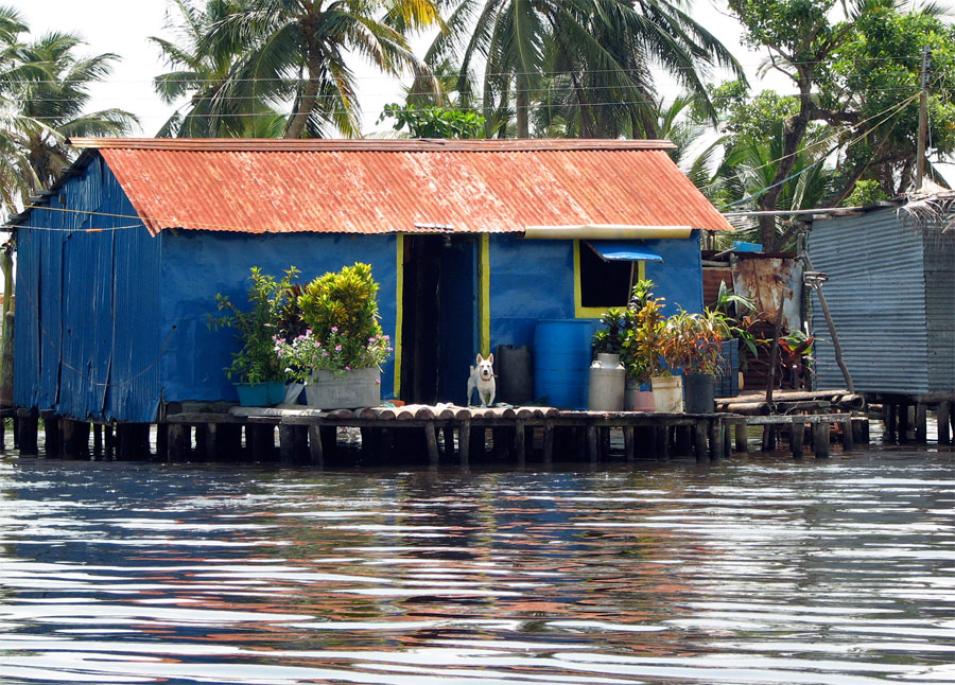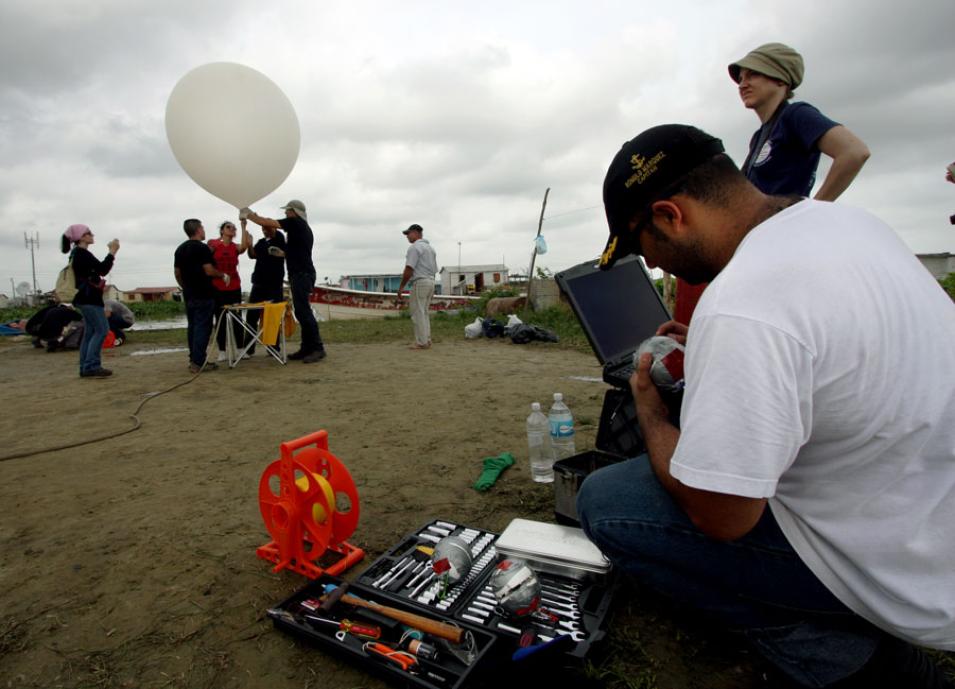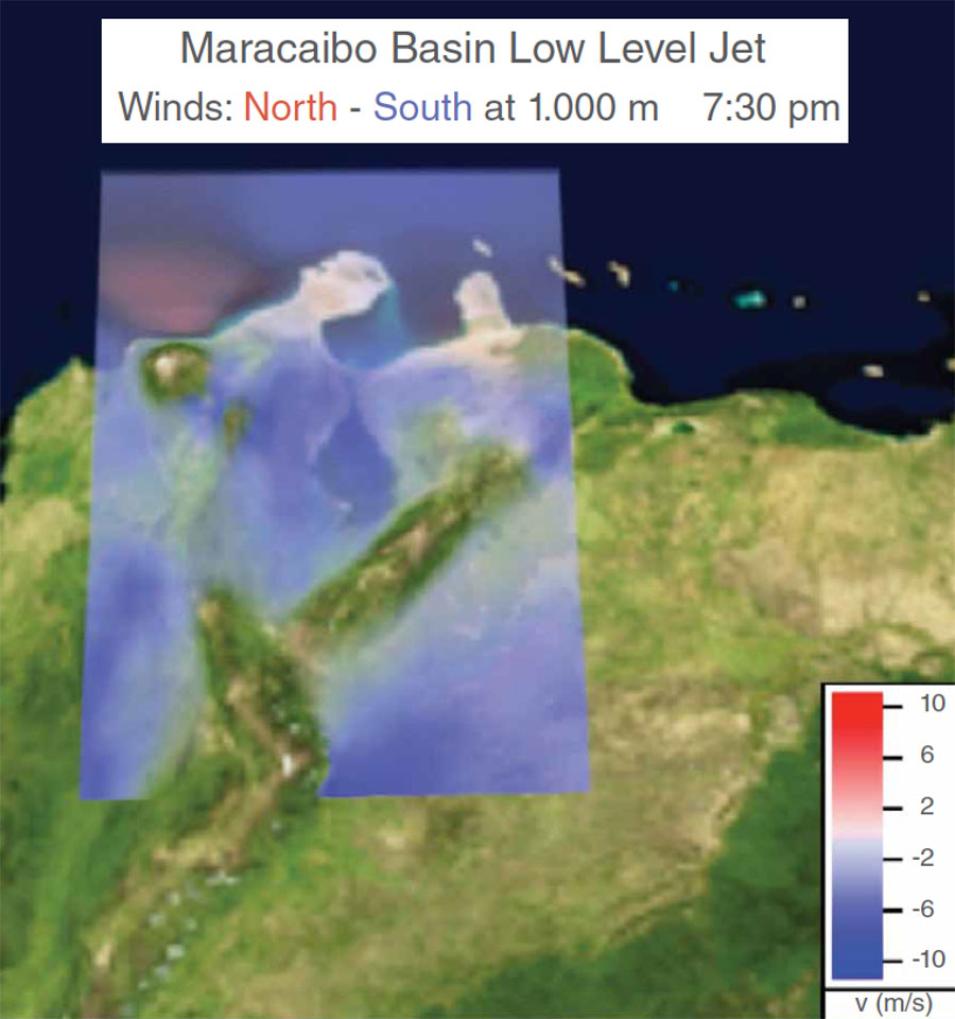Today, more than 15,000 miles of oil and gas pipelines crisscross the lake floor. Oil leaks out of corroded pipes, and puddles of iridescent rainbows surface. “This used to be one of the top oil producers in the world,” Díaz-Lobatón said. Political disorder and the recent, depressed oil market has slowed production, but at its height 90 percent of Venezuela’s economy came from oil. And no matter the productivity level, real and false lightning alarms have hampered about 10 percent of its yearly extraction. “Lightning storms hinder a significant amount of production. The model could help address this,” Díaz-Lobatón said. The oil industry could delay or reschedule their work.
Fueling fishing boats also sends fishermen into dangerous lightning. Lake Maracaibo spans 13,200 square kilometers (5,100 square miles), about the size of Connecticut. From Congo Mirador, a palafito village at the mouth of the Catatumbo River, to a fuel station requires a two-hour journey one way. Providing months-advance warning could help people take extra precautions. Fishermen could fish on milder nights, and the four-hour boat journey can be better planned for. “It’s not about stopping things for months. It’s about taking advantage of windows of opportunity, and not taking unnecessary risks when lightning activity is above normal,” Muñoz said.
Being named the most lightning struck place on Earth has brought tourists to the area. But tourists do not stay. They do not spend money, so villagers continue to fish for subsistence. Danger and poverty will not go away anytime soon, but helping to reduce lightning risk can make a difference. “This is the first study to address seasonal predictability,” Díaz-Lobatón said. “It helps people. That’s what makes us happy. That’s really what motivates us. That’s the whole point.”
References
Albrecht, R., S. Goodman, D. Buechler, R. Blakeslee, and H. Christian. 2016. LIS 0.1 Degree Very High Resolution Gridded Lightning Climatology Data Collection. Data sets available online from NASA's Global Hydrometeorology Resource Center (GHRC) DAAC, Huntsville, AL, U.S.A. doi:10.5067/LIS/LIS/DATA306.
Blakeslee, Richard. 1998. Lightning Imaging Sensor (LIS) Science Data. Data set available online from NASA's Global Hydrometeorology Resource Center (GHRC) DAAC, Huntsville, AL, U.S.A. doi:10.5067/LIS/LIS/DATA201.
Cecil, D. J., D. Buechler, and R. Blakeslee. 2014. LIS/OTD Gridded Lightning Climatology Data Sets. Data set available online (ftp://ghrc.nsstc.nasa.gov/pub/lis/climatology) from NASA's Global Hydrometeorology Resource Center (GHRC) DAAC, Huntsville, AL, U.S.A. doi:10.5067/LIS/LIS-OTD/DATA311.
Díaz-Lobatón, J. 2012. Energética de los relámpagos del Catatumbo. Trabajo Especial de Grado. Translation: Energetics of the Catatumbo Lightning. BSc Thesis. Departmento de Física, Facultad de Ciencias de Universidad del Zulia. Maracaibo 102pp.
Muñoz, Á. G., J. Díaz-Lobatón, X. Chourio, and M. J. Stock. 2016. Seasonal prediction of lightning activity in North Western Venezuela: Large-scale versus local drivers. Atmospheric Research 172–173: 147–162. doi:10.1016/j.atmosres.2015.12.018.
For more information
NASA Global HHydrometeorology Resource Center Distributed Active Archive Center (GHRC DAAC)
Tropical Rainfall Measuring Mission (TRMM)



